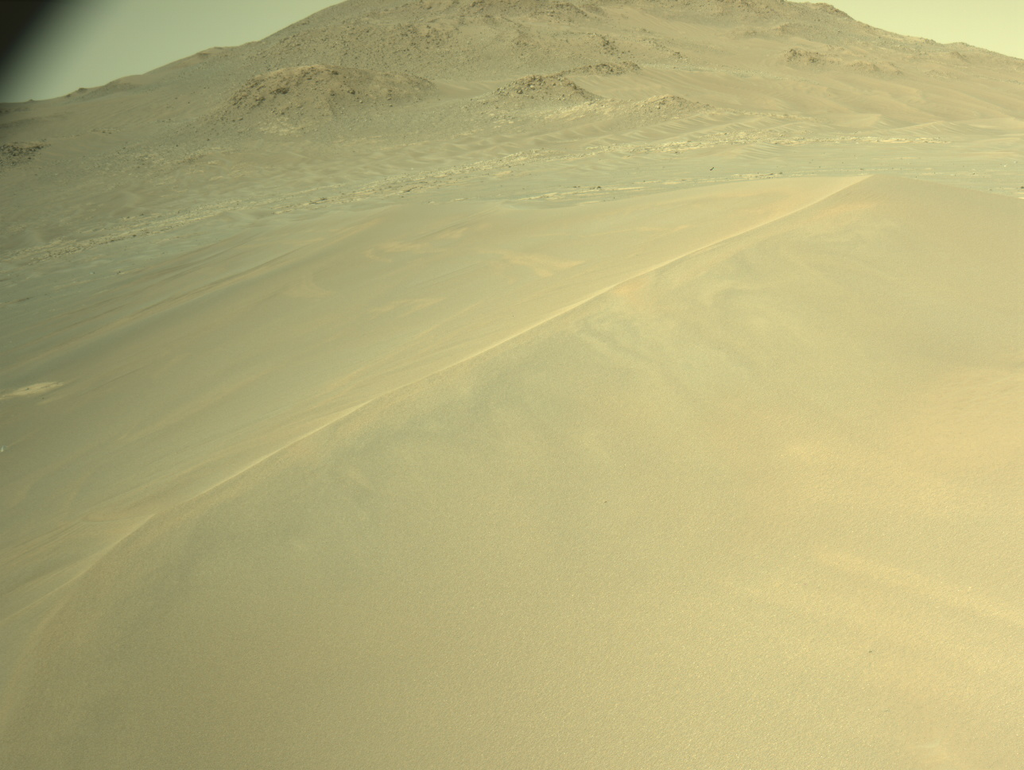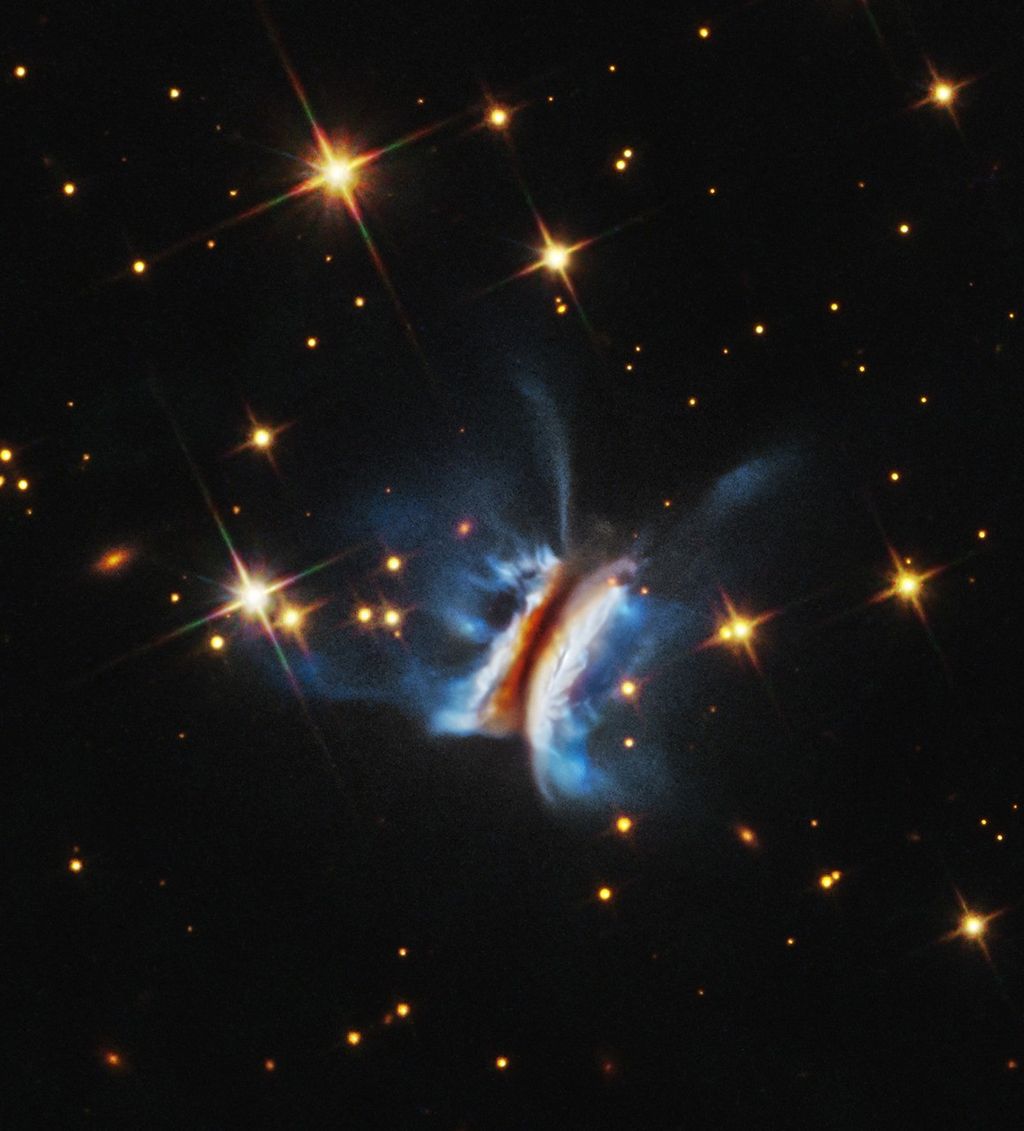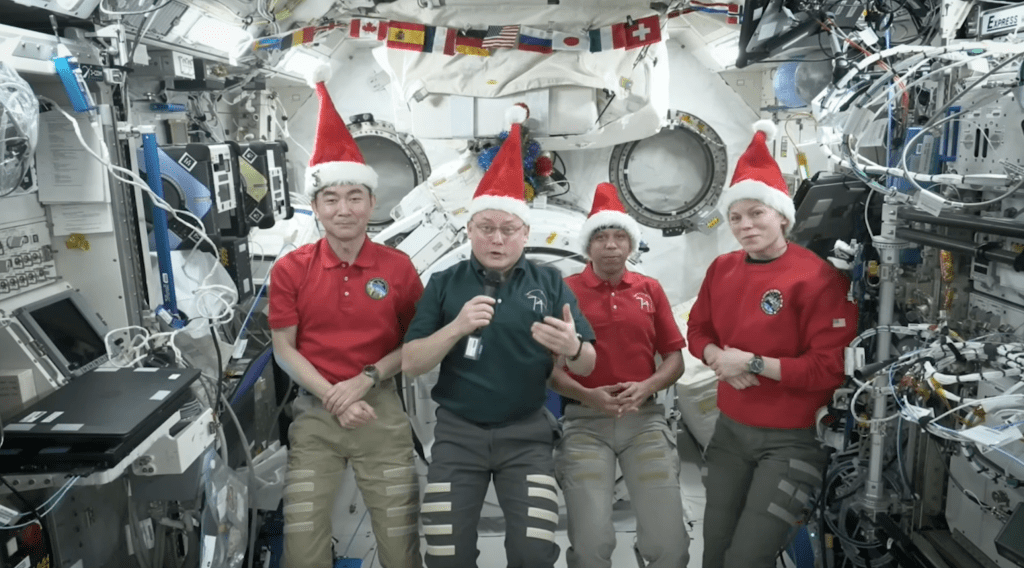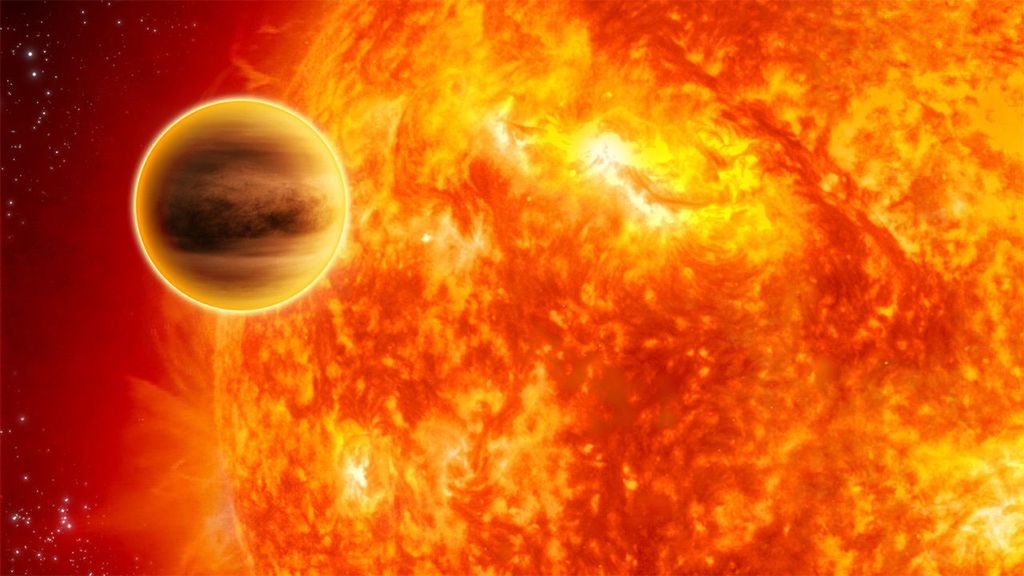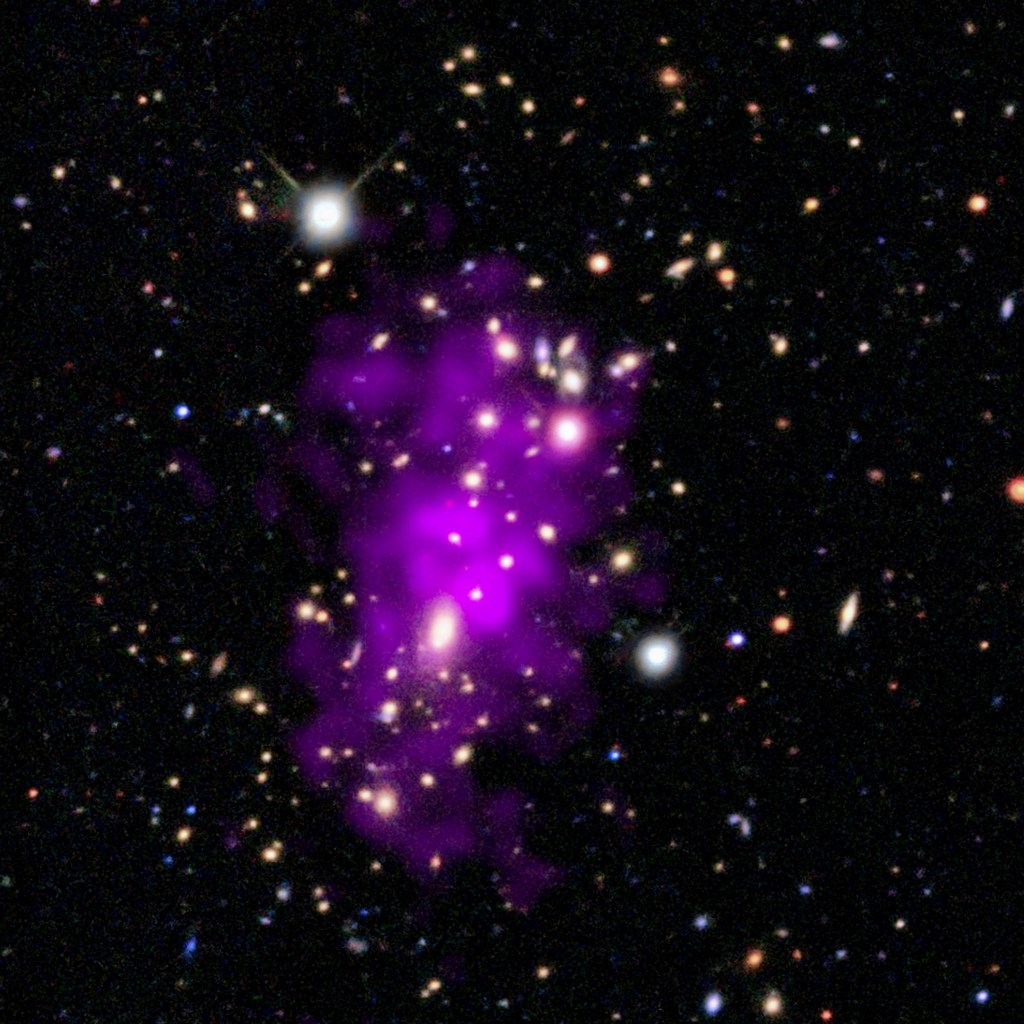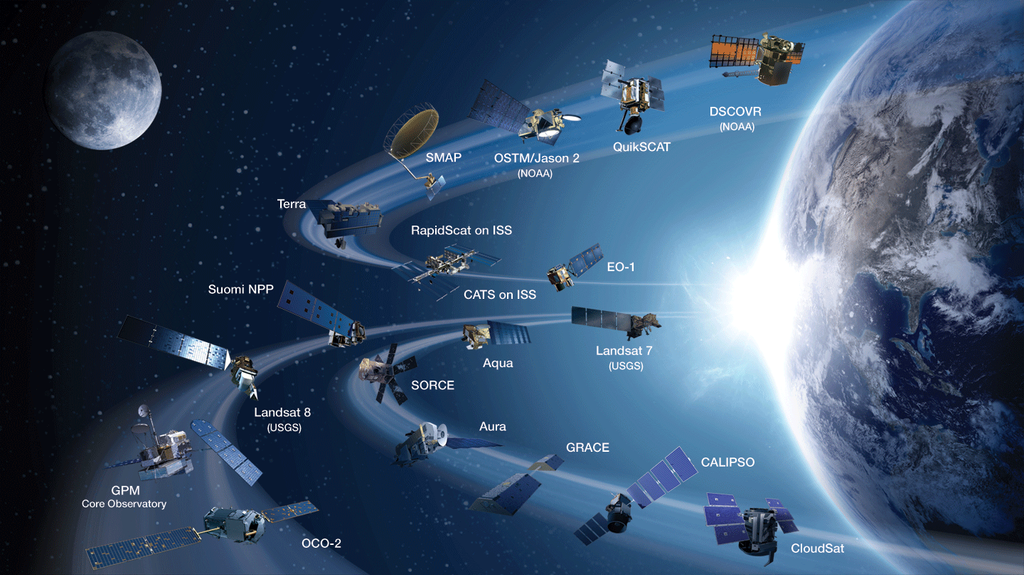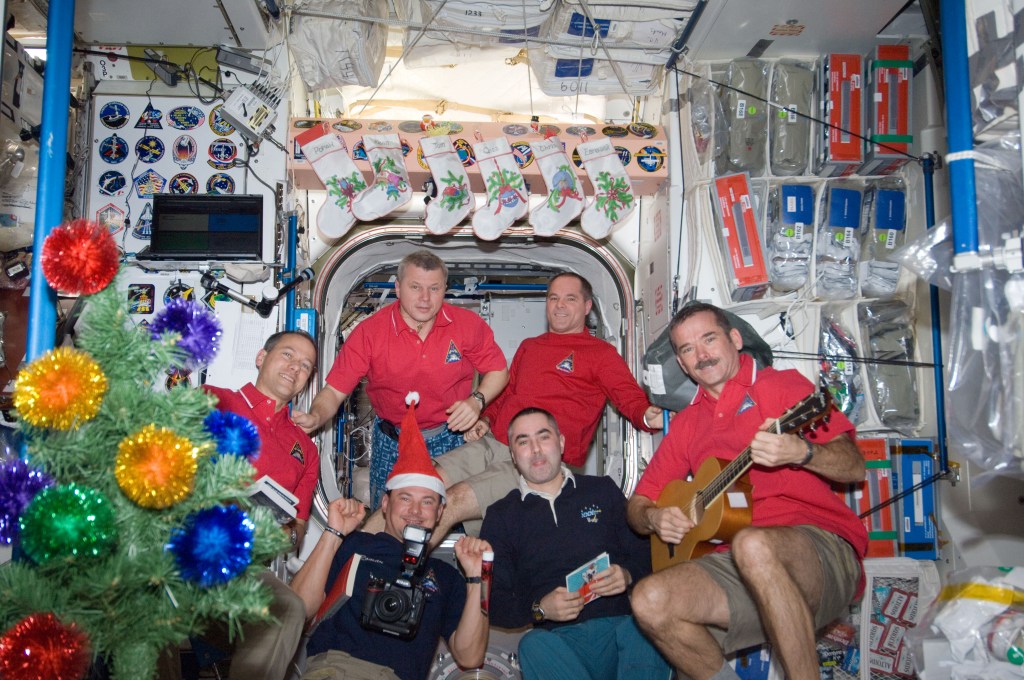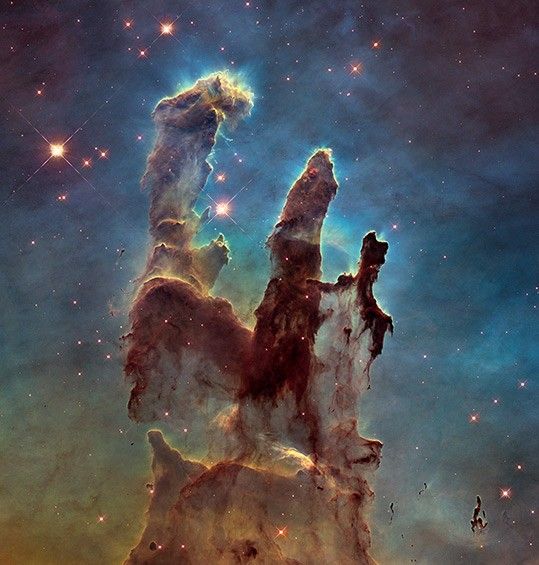1 min read
Hubble Provides Infrared View of Moon, Ring, and Clouds

Probing Jupiter's atmosphere for the first time, the Hubble Space Telescope's new Near Infrared Camera and Multi-Object Spectrometer (NICMOS) provides a sharp glimpse of the planet's ring, moon, and high-altitude clouds.
The presence of methane in Jupiter's hydrogen- and helium- rich atmosphere has allowed NICMOS to plumb Jupiter's atmosphere, revealing bands of high-altitude clouds. Visible light observations cannot provide a clear view of these high clouds because the underlying clouds reflect so much visible light that the higher level clouds are indistinguishable from the lower layer. The methane gas between the main cloud deck and the high clouds absorbs the reflected infrared light, allowing those clouds that are above most of the atmosphere to appear bright. Scientists will use NICMOS to study the high altitude portion of Jupiter's atmosphere to study clouds at lower levels. They will then analyze those images along with visible light information to compile a clearer picture of the planet's weather. Clouds at different levels tell unique stories. On Earth, for example, ice crystal (cirrus) clouds are found at high altitudes while water (cumulus) clouds are at lower levels.
Besides showing details of the planet's high-altitude clouds, NICMOS also provides a clear view of the ring and the moon, Metis. Jupiter's ring plane, seen nearly edge-on, is visible as a faint line on the upper right portion of the NICMOS image. Metis can be seen in the ring plane (the bright circle on the ring's outer edge). The moon is 25 miles wide and about 80,000 miles from Jupiter.
Because of the near-infrared camera's narrow field of view, this image is a mosaic constructed from three individual images taken Sept. 17, 1997. The color intensity was adjusted to accentuate the high-altitude clouds. The dark circle on the disk of Jupiter (center of image) is an artifact of the imaging system.
- Object NameObject NameA name or catalog number that astronomers use to identify an astronomical object.Jupiter
- Release DateNovember 20, 1997
- Science ReleaseHubble Provides Infrared View of Moon, Ring, and Clouds
- CreditReta Beebe (New Mexico State University) and NASA
Share
Details
Claire Andreoli
NASA’s Goddard Space Flight Center
Greenbelt, Maryland
claire.andreoli@nasa.gov



